I'm attempting to build an interface for a 1985 IBM typewriter keyboard. This is interesting because it's bidirectional --- the keyboard has a screen on it. I was expecting some variation of XT or AT protocol, but it's really not.
There appear to be two wires which are used; one is clearly a reset line and is of no further interest; and the other is used for all data transmissions. There is no clock wire.
So far I've observed:
data transmission is in short packets, probably bytes. One is pictured above. Each one is prefixed with a much higher frequency prologue sequence. I've observed at least two kinds. (Keyboard→machine and machine→keyboard?)
looking at it on the scope, the leading edges are very sloppy, but trailing edges are sharp. If I assume that only the trailing edges are the ones of significance, but the sequence pictured only has five, which isn't enough for a simple time-between-trailing-edges protocol.
the pulse width is very approximately 100us, meaning the protocol runs at 100kHz-ish, which seems reasonable. The short pulses are about 20us from trailing edge to trailing edge.
(new) Taking a logic analyser trace without the keyboard attached shows that the base station is sending the initial high-frequency sequence and then waiting for a response. This suggests that the protocol is polled and controlled from the master end.
(new) In the trace below, there are four timings: high intervals can be 45us or 67us. Low intervals can be 54us or 44us. This doesn't add up neatly to simple async mark/space bits.
(new) There's no high-level timing structure I can see --- i.e. no sequences which look like packets or frames. The only communication is a constant stream of sequences like the one below. (newer) This actually turns out to be wrong. There are some multi-packet sequences, mostly in startup and initialisation; I was just looking in the wrong place. I'm not sure they help to identify what this is, however.
I wasn't expecting anything quite this... odd. It's certainly not any of the one-wire protocols I've encountered before. I've double checked that there isn't a clock wire hidden away anywhere. Any ideas?
(As an aside, none of the ICs on the keyboard are identifiable! Mysteriously so, in fact. There's a chip with the TI logo with a number starting with SH, which is not Texas Instruments' IC prefix (SN)? Likewise, a National Semiconductor chip with an NK code (should be DM/LM/MM)... even the MCU just says it's an Intel 'PI M A'. Picture attached.)

